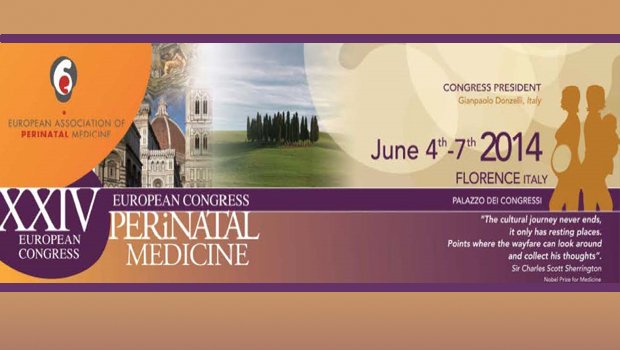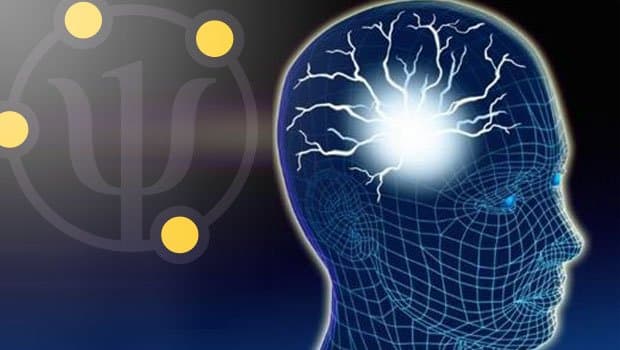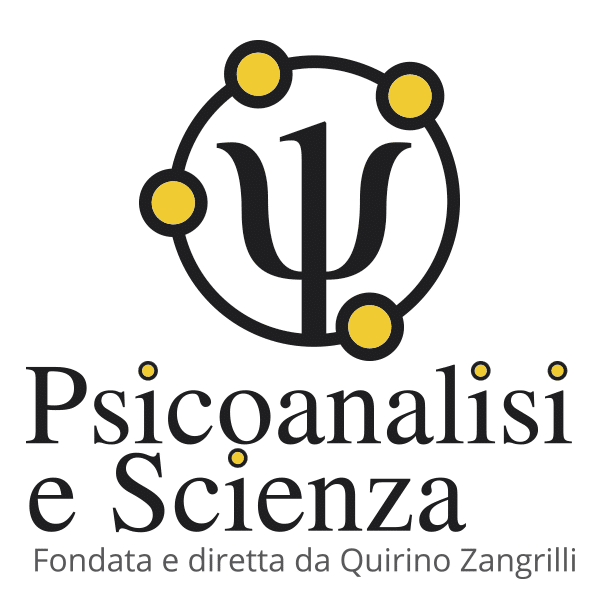The psychobiological relationship between the mother and the fetus is the topic of the session that the Italian Institute of Micropsychoanalysis presented at the 24th European Congress of Perinatal Medicine. 1 It is inspired by the research carried out by Silvio Fanti and Nicola Peluffo in the 1970s on the mother-child interactions starting from intrauterine life, and that Peluffo has recently updated and presented in his work The mother-fetus psychobiological relation. 2
Their long sessions of psychoanalysis allowed them to focus on the uterine relationship between mother and fetus using the material of the patient analysed, and to highlight the phenomena which represent the first imprint influencing every human activity, from dreaming to daily life. Therefore, Fanti also introduced the concept of “initial stage”, i.e. the first stage of the sexual-aggressive development, preceding the typical oral, anal and oedipal-phallic stages. 3
In the last years, other micropsychoanalysts have had the chance to compare their observations on the prenatal origin of psychopathological manifestations of their patients with the ones of other specialists who, thanks to the improvement of ultrasound techniques, could observe the spontaneous fetal activity in real time and the reaction to several stimulations, giving great input to research on prenatal life.
On 4 October 2010, Time magazine dedicated its cover article to “How the first nine months shape the rest of your life”. In the article, psychologist Annie Murphy Paul illustrates research about this topic, underlining how the mother’s diet, her health and the exposure to polluting agents, but also her mood during pregnancy can influence the life of a child and the rest of his future life.
Literature about this topic, which has literally exploded in the last fifteen years, contains references to the fact that cancer, circulatory diseases, allergy and hypertension, diabetes and obesity, asthma and mental illnesses have a fetal origin.
In 2009, the National Institute of Health, the U.S. federal agency that deals with medical research, started a multi-generation study dealing with the characteristics of the fetus to better understand which factors will affect his adult life.
Mother-child conflicts assume particular interest and are debated amongst obstetricians in the clinical practice. The term “mother-fetus conflict” refers to every situation in which the well-being of the mother or her wishes are in contrast with the well-being of the fetus or vice versa, or when the moral obligations of the doctor are in conflict with the ones regarding the fetus. 4
The existence of the above-mentioned conflict can seem a paradox to some, since it is a common belief that a mother usually has a protective and conservative behaviour towards the fetus. However sometimes things go differently.
In a 2011 work, Gian Carlo Di Renzo and his colleagues assumed the existence of a transfer of the “Medea syndrome” from the child to the fetus and analyzed its genetic, psychobiological, pathological, and ethical aspects. The expression originates from the Greek tragedy by Euripides that tells the sad story of Medea, wife and mother, that, in order to punish her husband Jason’s betrayal, sacrifices the lives of their children, to assert the dominance of women over men. 5
Di Renzo refers to the hypothesis of the existence of an intrauterine psychic life formulated by Nicola Peluffo in 1976. In his volume Micropsicoanalisi dei processi di trasformazione (Micropsychanalysis of transforming processes) Peluffo studied the complex immune reactions that take place inside the mother-fetus unity, trying to explain the only exception in nature concerning the rules of histocompatibility. The way in which the mother accepts and harmonizes the genetic material coming from the father would derive from this exception. To sum up, specific psychic dynamics would take the place of the rejection somatic response and so the conflict would shift from the physical plain to psychic processing, therefore abandoning the somatic aspect. On a physiological plan, the threat for the fetus, which carries within itself the genetic makeup of the father, is to be expelled, while for the mother to be invaded by a genetically unrelated organism. On a psychic plan, the immune conflict activated by genetic differences corresponds to the start of the dynamics holding in/pushing out and to be held in/to be pushed. 6
In his book La micropsicoanalisi Silvio Fanti describes such conflict as a real “uterine war”. Pregnancy becomes the setting of a psychobiological conflict which will leave traces in the entire life of the individual.7
The hypotheses of micropsychoanalysis are confirmed by evolutionary biology. 8
The mother-fetus conflict starts during the implantation period. Mother and fetus begin an unconscious battle for nutrition and mutual survival. Placenta – only in the human species – has an invasive growth patter which allows it to take a place, since the beginning, in the uterine tissue and, at the expense of the maternal endometrium, opens vascular communication systems between mother and fetus. The fetus, through these communication systems, transfers to the mother’s body a series of strategic substances to survive.9
So, the beginning of a pregnancy is a psychobiological conflict that marks deep changes in the mother’s psyche. However, does a psyche exist in the intrauterine life? Does the fetus realize the war he has to face to survive? These are the questions many obstetricians ask themselves.10
Or, is there fetal self-awareness? Does the fetus feel pain during late abortions and fetal surgery? Ulrich Honemeyer states that 4D ultrasound “allows us to be the spectators of intrauterine fetal life”. He distinguishes between fetal “adult” self-awareness and “primary” self-awareness.11
The concept of “self-awareness” implies realizing the existence of a personal reality and an external one, as if they were different even if belonging to the same spatio-temporal continuum. The awareness of the Ego presupposes the awareness of the body. 12
In contrast to this “adult” form, fetal “primary” awareness develops before the formation of the cortex in the brainstem, since the brainstem is capable of learning (habituation), and owns a rudimentary cognitive-like function. Fetal “primary” awareness includes the acquisition of knowledge about inter-sensory-motor relations in the own body and-in twin pregnancies- the capacity of co-twin directed movements. 13
Sensory systems function already in the embryo at 7 weeks. The development of sensory systems depends on self-generated and external stimulation. Maternal stimulation of the fetus includes vestibulo-cochleal-, chemosensory (olfactory-gustatory), auditory-, tactile-, psycho-vegetative-, endocrinological-, and bio-rhythmic stimulation. Maturation of fetal sensory systems and fetal learning leads to the development of fetal-maternal synchrony. Synchrony requires networking between different systems. Intra-fetal synchrony: increasing synchrony of fetal heart rate and motility expresses the rising neural integration of two different parameters in the fetus itself. Fetal-maternal synchrony was found by J. Di Pietro et al. in a study in 2006: using maternal heart rate (HR) and skin-conductance (sympathicus) as parameters, they saw that fetal movements were followed by maternal HR-increase. Findings for skin conductance were similar. 14
This type of research can be compared to the one of the first pioneers of psychoanalysis, above all Sigmund Freud. He believed that the Ego derived from body perceptions, especially the ones coming from the “surface of the body (sensory receptors), insomuch to say that the conscious Ego is first of all a body-Ego. And it is the awareness of the body-Ego that allows to sense, assess and, in a certain way, orient and guides drives. According to Freud’s theories, The Ego, since its origin, can be considered as a neurologic structure, a network of neurons hit by sensory stimuli, and that works in a selective way, creating barriers to perceptions, denying the passage towards a certain quantum of energy which exceeds the ability to endure the psychic structures in fieri and which is potentially damaging. The need for such protective barrier is at its peak at the beginning of life.
«A child, during his first year of life, feels every tension, need or frustration as pain, since there still is not the capacity to distinguish the experience of being uncomfortable and a more acute and defined experience of real pain».15
According to Victor Tausk, the ego exists since the beginning of life, as the basis of the organic unit. In this period, that Tausk calls non-objectual, sensory stimuli do not refer to external sources and from a subjective point of view there is not the capacity to distinguish between internal and external. It is the identification phase, that there is a self-investment of the organic unit, called innate narcissism. In this stage the subject discovers his body, treating it like an external object. Even the feelings that derive from it are treated as external. It is the projection phase. The body is perceived in segments, later it will be perceived as a whole. Finally the subject, through a second identification process, will take possession of his body, i.e. of himself in his totality. 16
According to Federn as well, the ego exists since birth, it is not only an “organizer” with the aim to hierarchize and harmonize needs, but at the same time it is experienced as the feeling of itself. This feeling, which is present since birth, is the manifestation of a fundamental narcissistic investment. 17
Nicola Peluffo shares the ideas of the two above-mentioned authors, and presupposes that the organizing need is present since birth and confused with the es and that the narcissistic modality is the energetic element that maintains its organization. These different hypotheses share the idea that the primary narcissistic investment is the element through which the ego recognizes itself as an entity in search of homeostasis, therefore as an entity with the aim to satisfy needs and desires. 18
To conclude, I believe that to give an answer to the questions that psychoanalysts and obstetricians ask themselves, a multi-disciplinary approach would be necessary. Kandel’s call for a biological and psychoanalytical meeting point should not be underestimated.19
© Luigi Baldari, Italian Institute of Micropsychoanalysis
Notes:
– 1 24th European Congress of Perinatal Medicine, June 4-7 2014, Florence (Italy) 
– 2 Nicola Peluffo, La relazione psicobiologia madre-feto, Roma, Borla, 2010 
– 3 Silvio Fanti, La micropsicoanalisi, Roma, Borla, 1983 (Life in micropsychoanalysis, London and New York, Routledge, 1990) 
– 4 Lucia Gentilucci et al., Conflitto materno-fetale, Riv. It. Ost. Gin., 2009, Num. 21 
– 5 Gian Carlo Di Renzo et al., La sindrome di “Medea” in epoca perinatale. I conflitti materno-fetali, Riv. It. Ost. Gin., 2011, Num. 29 
– 6 Nicola Peluffo, Micropsicoanalisi dei processi di trasformazione, Torino, Book’s Store, 1976 
– 7 Silvio Fanti, La micropsicoanalisi, Roma, Borla, 1983 (Life in micropsychoanalysis, London and New York, Routledge, 1990) 
– 8 Quirino Zangrilli, The intrauterine war: the hypotheses of micropsychoanalysis are confirmed by the evolutionary biology, Scienza e psicoanalisi, January 1, 2007 
– 9 David Haig, Genetics conflict in human pregnancy, The quarterly Review of Biology, December 1993, Volume 68, N. 4 
– 10 Gian Carlo Di Renzo et al., La sindrome di “Medea” in epoca perinatale. I conflitti materno-fetali, Riv. It. Ost. Gin., 2011, Num. 29, pag. 304 
– 11 Ulrich Honemeyer, Asim Kurjak, Fetal awareness in singleton and multiple pregnancy: scientific reality or fiction?, Tredicesima edizione delle Giornate siciliane di formazione micropsicoanalitica “Verità e Realtà Psichica”, Capo d’Orlando (Italy), October 6-7, 2011 
– 12 Karl Jaspers, Allgemeine Psychopathologie, Berlin, Verlag von Jiulius Springer, 1913 
– 13 Bjorn Merker, Consciousness Without a Cerebral Cortex: A Challenge for Neuroscience and Medicine, Behavioral and Brain Sciences, Cambridge University Press, Volume 30, Issue 01, February 2007 
– 14 Janet A. Di Pietro and other, Prenatal development of intrafetal and maternal-fetal synchrony, Behavioral Neuroscience, Vol. 120, June 2006 
– 15 Anna Freud, L’influsso della malattia fisica nella vita del bambino, Opere, Vol. 1, 1922-1943, Torino, Bollati Boringhieri 
– 16 Victor Tausk, Scritti Psicoanalitici, Roma, Astrolabio, 1979 
– 17 Paul Federn, Ego psychology and the psychoses, New York, Basic Books, 1952 
– 18 Nicola Peluffo, Narcisism and pre-natal ego, Luigi Baldari (ed.), The early mother-child interaction, Roma, Alpes, 2011 
– 19 Eric R. Kandel, Biology and the future of psychoanalysis: a new intellectual framework for psychiatry revisited, American Journal of Psychiatry, 1999 
Il Dott. Luigi Baldari vive e lavora a Messina (Italia).
Dirigente medico psichiatra responsabile dell’Unità Operativa Semplice Psicoterapia Studi e Ricerche presso l’Azienda Sanitaria Provinciale di Messina.
Membro ordinario dell’Istituto Italiano di Micropsicoanalisi e della Società Internazionale di Micropsicoanalisi. Responsabile scientifico e relatore nelle sedici edizioni delle Giornate siciliane di formazione micropsicoanalitica.
Socio ordinario dell’Associazione AION, associazione per la ricerca la formazione e la diffusione della gruppoanalisi e del lavoro analitico nell’istituzione.
Socio individuale COIRAG, confederazione delle organizzazioni italiane per la ricerca analitica di gruppo.
Docente di Psicologia dello sviluppo e dell’educazione per il Corso di Laurea Magistrale in Scienze Riabilitative delle Professioni Sanitarie presso la Facoltà di Medicina e Chirurgia dell’Università degli Studi di Messina.
Docente di Psichiatria del Corso di formazione specifica in Medicina generale presso l’Ordine Provinciale dei Medici di Messina.
Tiene seminari presso la Scuola di specializzazione in Psichiatria dell’Università degli Studi di Palermo.
Ha curato i volumi “Tabù delirio e allucinazione” (2009), “Le prime interazioni madre-bambino” (2011) e “Creatività e clinica” (2013), editi da Alpes
Dr. Luigi Baldari lives and works in Messina (Italy).
Psychiatrist responsible for the Psychotherapy Operating Unit Studies and Research at the Local Health Authority of the province of Messina.
Ordinary member of the Italian Institute of Micropsychoanalysis and of the International Society of Micropsychoanalysis. Scientific coordinator and lecturer in the sixteen editions of the Sicilian Days of micropsychoanalytical training.
Ordinary member of the Association AION, association for research, training and development of group analysis and analytical work in institutions.
Individual member of COIRAG, the Italian confederation for analytical group research.
Developmental and educational psychology professor at the Course for Health Professions of Rehabilitation Sciences at the Faculty of Medicine, University of Messina.
Psychiatry Professor for the General Medicine Training Course at the Local Medical Association of the Province of Messina.
He holds seminars at the School of Specialization in Psychiatry at the University of Palermo.
He edited the volumes “Tabù delirio e allucinazione” (2009), “Le prime interazioni madre-bambino” (2011) and “Creatività e clinica” (2013), published by Alpes.











